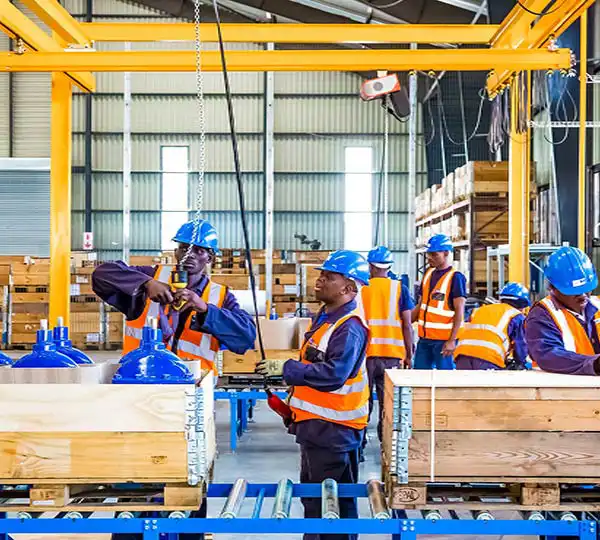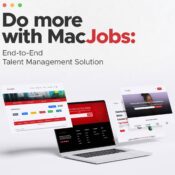
The Dangers of Brain Drain: How Businesses Lose When Talent “Japa”
Today, the main discussion (and concern) for business owners, HR and talent managers has shifted from talent acquisition to talent retention, with conversations around brain drain “japa” gaining momentum.
A recent MacTay survey found that 70% of professionals say their companies have been negatively affected by the current brain drain “japa wave” in the country.
Losing talent and expertise can adversely affect your company’s competitiveness, growth potential, profitability, and future success. In addition, the exodus of talent can lead to a decline in morale among the remaining employees.
In this article, we will explore the impact of talent churn on businesses and provide strategies you can use to retain top talent and prevent valuable employees from leaving your organisation.

What exactly is Brain Drain “Japa”?
Brain drain, also known as human capital flight — or “japa” in Nigeria — is a term used to describe the loss of professionals, qualified workers, and young graduates to developed countries.
This phenomenon often occurs in developing countries where the best and brightest are attracted by higher salaries, better working conditions and greater opportunities for advancement. The result is a brain drain for the developing country, which suffers from a loss of human capital.
In the context of an organisation, brain drain means the gradual loss of your company’s best talent over a period. Sometimes these employees leave your company to join your competitors. In other cases, they migrate to companies outside the country.
While it is normal for skilled professionals to leave a company for better working conditions or pay, brain drain usually typifies a crack in your organisation’s talent management strategy.
How is brain drain impacting businesses?
Brain drain is a global phenomenon that has severe consequences for companies.
When talented employees leave to pursue better opportunities, the chance of achieving strategic goals is reduced, productivity drops and your company’s bottom line is affected.
Below we have outlined four critical impacts of organisational brain drain on businesses:
#1. Loss of intellectual capital can lead to low productivity

A study by the Organisation for Economic Co-operation and Development (OECD) found that a higher proportion of skilled workers in companies and more experienced managers are associated with higher productivity levels.
It goes without saying that a decline in intellectual capital in your company can inevitably lead to low workforce productivity.
So what is intellectual capital? It is the collective knowledge, experience and expertise that enables companies to scale and innovate. It includes everything from how well your business is managed, how effectively it operates and how your people communicate with each other and your customers.
When talented professionals leave a company, they not only take their knowledge with them, but the company may also suffer from low productivity.
For example, when a highly skilled professional leaves the company, a knowledge gap can be created that affects the entire company’s performance. The higher the skill level of the employee, the more significant the impact of their departure.
#2. Reduced innovation as talented professionals leave to take on new challenges
Innovation is the backbone of most companies today. From product development to market expansion, the ability to continuously improve products and services is critical to business growth.
And who drives innovation in your organisation? Highly experienced employees. So what happens when these valuable resources leave your company? Innovation slows down or grinds to a halt.
Studies have shown that companies with lower levels of human or intellectual capital have lower levels of innovation than companies with higher levels.
A study conducted by Annelied van Uden on “Human Capital and Innovation in Developing Countries” showed that there is a positive relationship between human capital and innovation. The study also highlighted that better-trained employees give companies a higher innovation output.
So when companies lose employees who are key contributors to the company and have experience in day-to-day business operations, it not only hurts the company’s bottom line and creates a gap in the workforce but also affects their ability to innovate and grow in the future.
#3. More challenging recruitment and retention efforts
According to the Society for Human Resource Management’s (SHRM) new benchmark report, the average cost per hire across companies and industries is $4,700.
To put this in perspective: if you want to fill a position with a salary of $60,000, you can spend $180,000 or more to fill that position. As with customer retention and acquisition, recruiting new employees is more expensive than retaining them.
Brain drain is a major recruitment and retention challenge because it deprives your organisation of the best talent. This can be problematic in three ways: first, there needs to be more candidates who meet the required skill set for the vacant position.
Second, when talented employees leave for better opportunities, they often do so without notice, which can disrupt work processes and impact productivity and profitability, especially if no replacement is available.
Third, when employers lose top talent, they either have to pay higher salaries, sweeten their offers or resort to less qualified employees to fill positions that require specialised skills.
#4. Higher training and development costs as skilled employees are harder to replace
According to the Association for Talent Development’s State of the Industry 2021 report, sponsored by AllenComm and Allego; the average company had a direct learning spend of $1,267 per employee in 2020. The study was conducted on 223 companies that provided data on their learning programmes.
Similarly, studies have shown that when there is a shortage of technical skills or a loss of human capital, companies tend to increase their training and development costs to upskill their workforce and mitigate the potential impact.
However, the higher the skill and experience level of the departing employee, the greater the effect on the company and the cost of replacement (whether hiring new employees or upskilling existing ones ).
Getbridge states that “bridging a greater skills gap for one employee will naturally mean higher training costs and longer training durations.”










